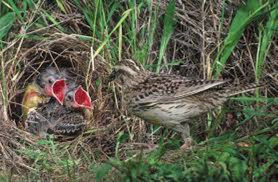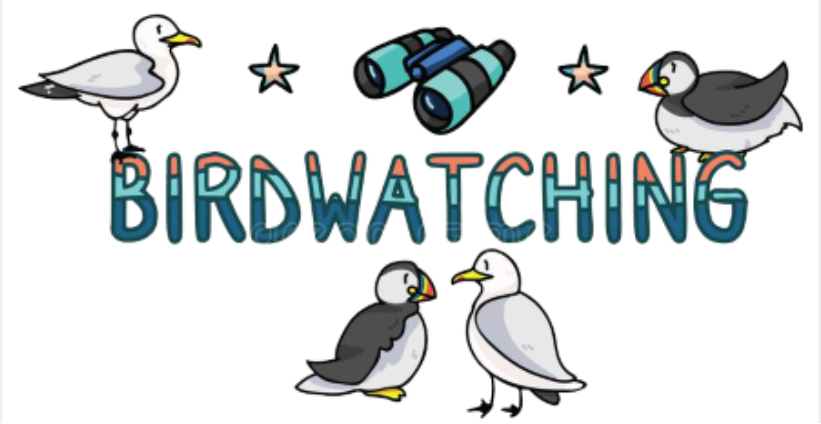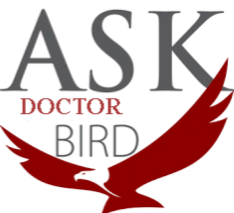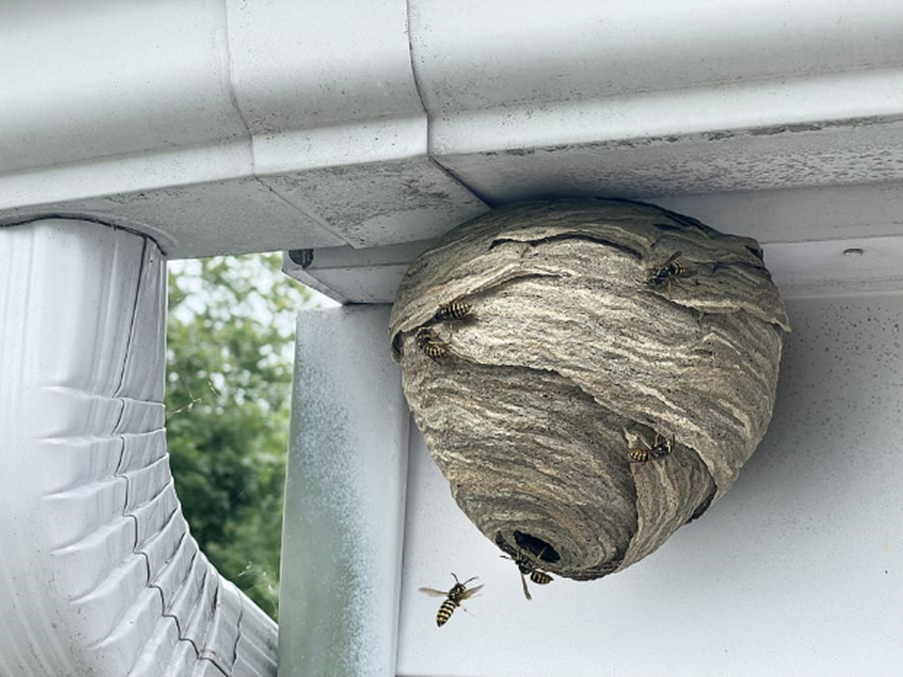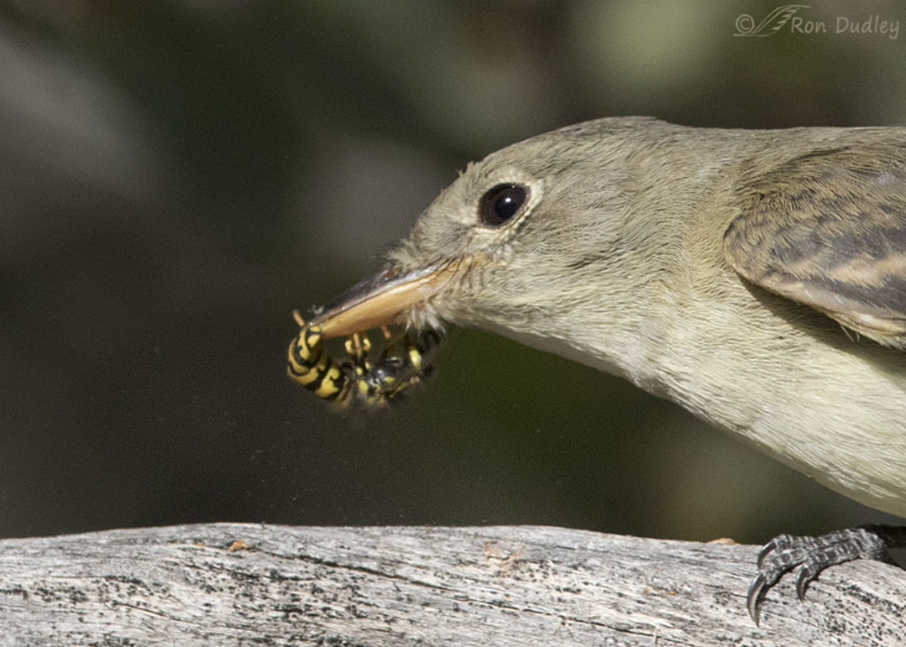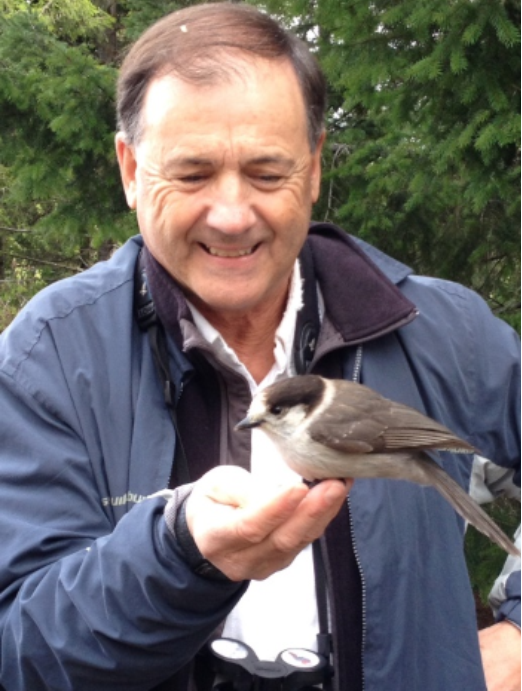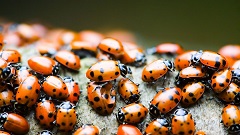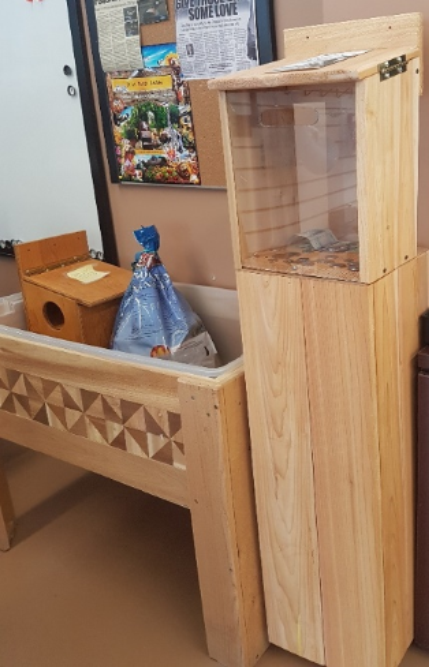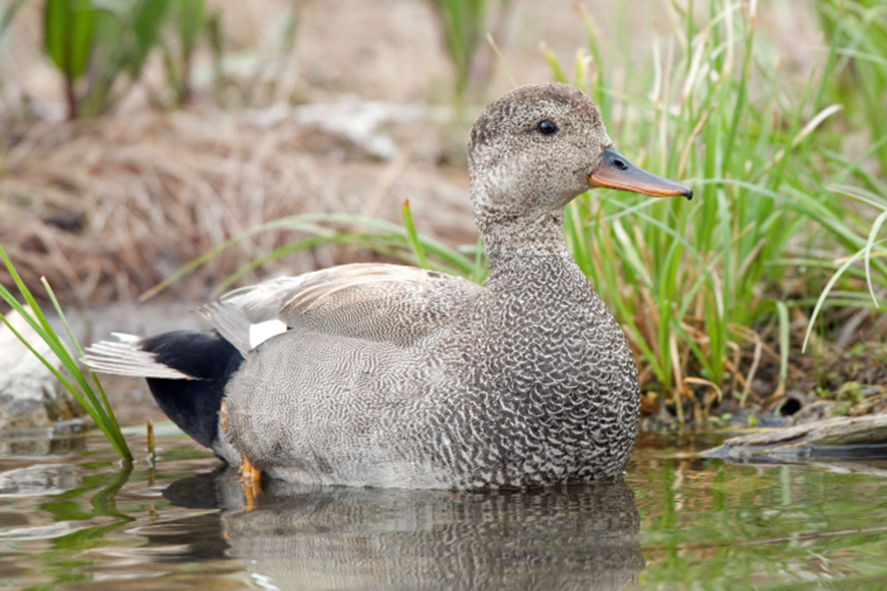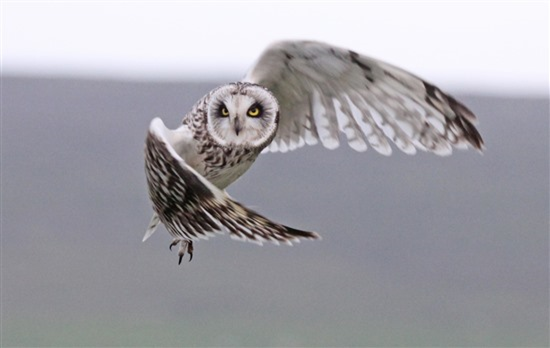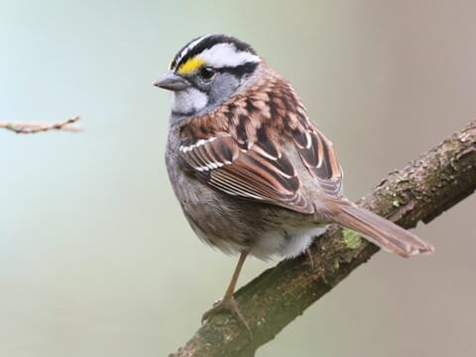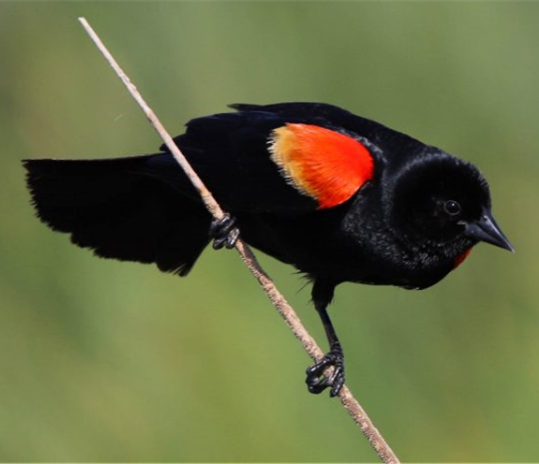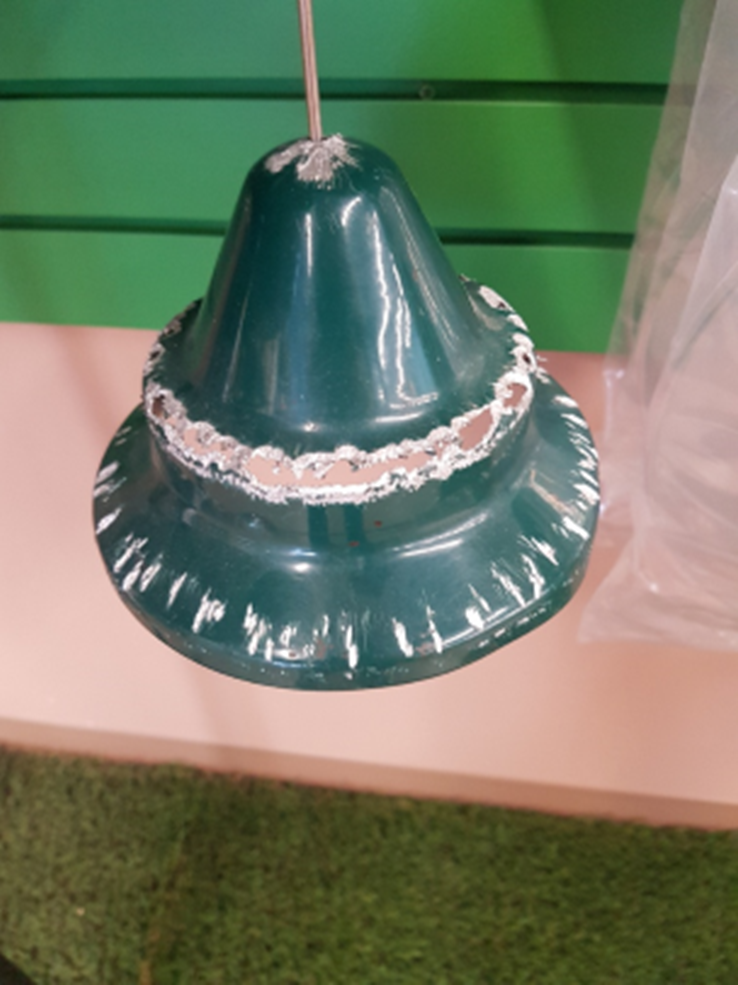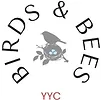LINK TO PDF NEWSLETTER DOWNLOAD

June 2025
Ethical Birding Guidelines:
Know When Birds Think You’re Too Close to Their Nests
Observing bird behavior is one of the many pleasures of birding. Each species has its own quirks of feeding, flight and social interaction, and seeing a bird engage in these natural behaviours gives the burgeoning birder a better understanding of the species beyond just field marks and identification points.
Of all the behaviours a bird engages in, however, new birders (and us long timers) should take care to learn and respect some sooner than others; namely, the variety of ways birds tell you that you’re too close to their nests.
It’s the beginning of summer, and birds are either sitting on eggs or already have hungry hatchlings to feed. This time of year is when birds are most vulnerable—and the most defensive.
The consequences of getting too close to a nest can be severe. Birds can abandon nests if disturbed or harassed, dooming eggs and hatchlings. Less obvious, repeated human visits close to a nest or nesting area can leave a path of scent trail for predators to follow. If you know you’re birding near a nest, avoid taking a “dead-end trail” to a nest area so that predators won’t have a direct route.
Birds won’t abandon a nest easily, though, and adult birds have developed a variety of ways to distract or deter unwanted visitors from visiting a nest.
Some of these behaviours are unmistakeable. Like dive-bombing. You won’t miss being dive-bombed. It’s the most aggressive form of anti-predator behavior, and it’s just what it sounds like: birds fly directly at the intruder in order to drive them away from the nest.
While you rarely can get scratched or pecked, truth is, dive-bombing is most dangerous for the bird. They’re spending energy trying to scare you away instead of feeding and caring for their young. There’s really only two pieces of advise for someone being dive-bombed: cover your head, and get the heck out of there! Don’t linger, don’t film it and put it on You Tube, just leave.
Not all birds defend their nest as directly and aggressively as dive-bombers. Some species try more creative approaches to distract or scare away predators from their nest.
The most famous distraction display is the Killdeer’s “broken wing” act. When a curious human or a predator gets too close to a Killdeer nest or some young birds, the adults can turn into full-on-thespians, loudly and pathetically faking a broken wing in hopes that the predator will pay attention to them and not the nest. Once the bait is taken, the Killdeer will lure the predator as far away as possible before making a miraculous recovery and flying back to the babies. It’s truly an Oscar-worthy performance.
While perhaps not as dramatic as the Killdeer, other birds also have clever tactics for deterring predators. Some birds will do their best snake impression, by hissing and swaying their heads around when you get too close to a nest. Other species, including some shorebirds such as Piping plovers and certain grassland birds such as sparrows, will do what’s called a “rodent run” distracting predators by conspicuously running through the grass like a mouse.
The simplest type of distraction displays are vocal. Adult birds can issue a quick call when a potential threat approaches that baby birds intuitively know means “sit still and be quiet.” When everyone in the nest is frozen, the parent bird can head elsewhere and distract the predator with vocalizations.
Anti-predator behavious generally are intended to get the attention of the intruder or surrounding birds. So if you see a bird acting in an exaggerated and noisy way you don’t normally observe in your birding outings, you might be close to a nest!
Because of this, birders need to be aware of their surroundings and should be on the lookout for birds acting strangely, especially during nesting season. Ask yourself: is it breeding/nesting season? Am I in good breeding habitat for the species that seems to be behaving strangely?
Context clues are also important because some species won’t do any sort of distraction display at all, instead opting to hunker down when predators are nearby. If it’s breeding season and you’re walking across a field or other dense low habitat when an adult bird flushes from practically beneath your feet, you might be right on top of a nest. When that happens, you should look very carefully at the ground around you, and even if you can’t spot a nest, back up slowly and detour around the site.
Birders have a responsibility to not harm the birds we’re enjoying. Nesting season is a stressful time for birds, so let’s not make it any worse. Birds will tell you when you’re getting too close, and learning to recognize those behaviours will help protect the birds and let you enjoy the pleasure of bird behavior—from a safe distance.


HOME DELIVERY SCHEDULE FOR MONTH OF JUNE 2025
Thursday June 12, Thursday June 26


All participants on any bird walk must have purchased a ticket through our website – www.wildbirdstore.ca and present the ticket to Jim prior to the bird walk.
The weather plays a big part in bird walks and Jim reminds participants to dress anticipating weather changes and to carry water to keep hydrated.
PLEASE NOTE:
Jim will be away the first 3 weeks of June 2025
LAFARGE/ROTARY (Fish Creek Park)
Saturday June 28, 2025
9:00am meet at boat launch parking lot at south end of Bow Bottom Trail)
Ticket price: $7.00 + GST

We offer a discount if you return your 20 LB or 40 LB seed bags so that we can re-use them (sorry—not the Mother Nature bags which we cannot re-use), suet ball containers, or if you bring your own container or bag to fill . This discount is in addition to any other discount offered.
Response:
My wife and I have been waging a constant battle, successfully I might add, to keep them from building their nests in four different gables on our house on Vancouver Island in recent years. And we have a fair number of backyard birds on our property, including chickadees and woodpeckers, both of which prey upon wasps. But with our feeders filled, they seem preoccupied with eating the easy-to-get suet and peanuts. In researching the topic, I came up with a list of close to twenty different kinds of North American birds that include wasps in their diet, some of which are not likely coming to your feeders, at least not in great numbers. The latter include kingbirds, yellow-billed magpies, house sparrows, starlings, warblers, catbirds and wrens. But they probably do use your birdbath. Interestingly, ruby-throated hummingbirds include wasps in their diet. All this to say, it is indeed feasible that your abundance of backyard birds could definitely make your property a no-fly zone for wasps. But I am not thoroughly convinced that the occasional wasp in the stomachs of your backyard birds will prevent a swarm of them building a nest.
There could be other factors. As for hornets, only two bird species appear to brave enough to take them on—Scarlet tanagers and Purple martins. And while your bird houses might attract some wasp-eating birds to nest in your yard, wasps have also been known to build their nests in them, even with bird eggs present. Overall, in recent years, yellowjacket wasps are making their presence known in our yards. The good news is, that any time birds are faced with an overabundance of a given food item, some do tend to take advantage of it.
Let’s hope so in any case!
David M. Bird, Ph.D., Emeritus Professor of Wildlife Biology, McGill University www.askprofessorbird.com

David M. Bird is Emeritus Professor of Wildlife Biology and the former Director of the Avian Science and Conservation Centre at McGill University. As a past-president of the Society of Canadian Ornithologists, a former board member with Birds Canada, a Fellow of both the American Ornithological Society and the International Ornithological Union, he has received several awards for his conservation and public education efforts. Dr. Bird is a regular columnist on birds for Bird Watcher’s Digest and Canadian Wildlife magazines and is the author of several books and over 200 peer-reviewed scientific publications. He is the consultant editor for multiple editions of DK Canada’s Birds of Canada, Birds of Eastern Canada, Birds of Western Canada, and Pocket Birds of Canada. To know more about him, visit www.askprofessorbird.com or email david.bird@mcgill.ca.
We are hoping to be able to offer Ladybugs once again this year. Unfortunately, we have not been able to confirm the price, so are offering our customers to be put on a “wish list” to be contacted once the price is available.
Kindly contact us by phone (403) 640-2632 (please leave a voicemail and will return your call) or by email at: info@wildbirdstore.ca


DONATIONS
Located at The Wild Bird Store (near the seed bins). We collect your cash as well as “wishlist” donations and arrange to deliver them to local wildlife organizations including Calgary Wildlife Rehabilitation, Alberta Institute of Conservation and Ellis Bird Farm.
We ask for your support quarterly for each of these organizations.
For June, July and August, 2025 your donations will go to:
Thank you for your support
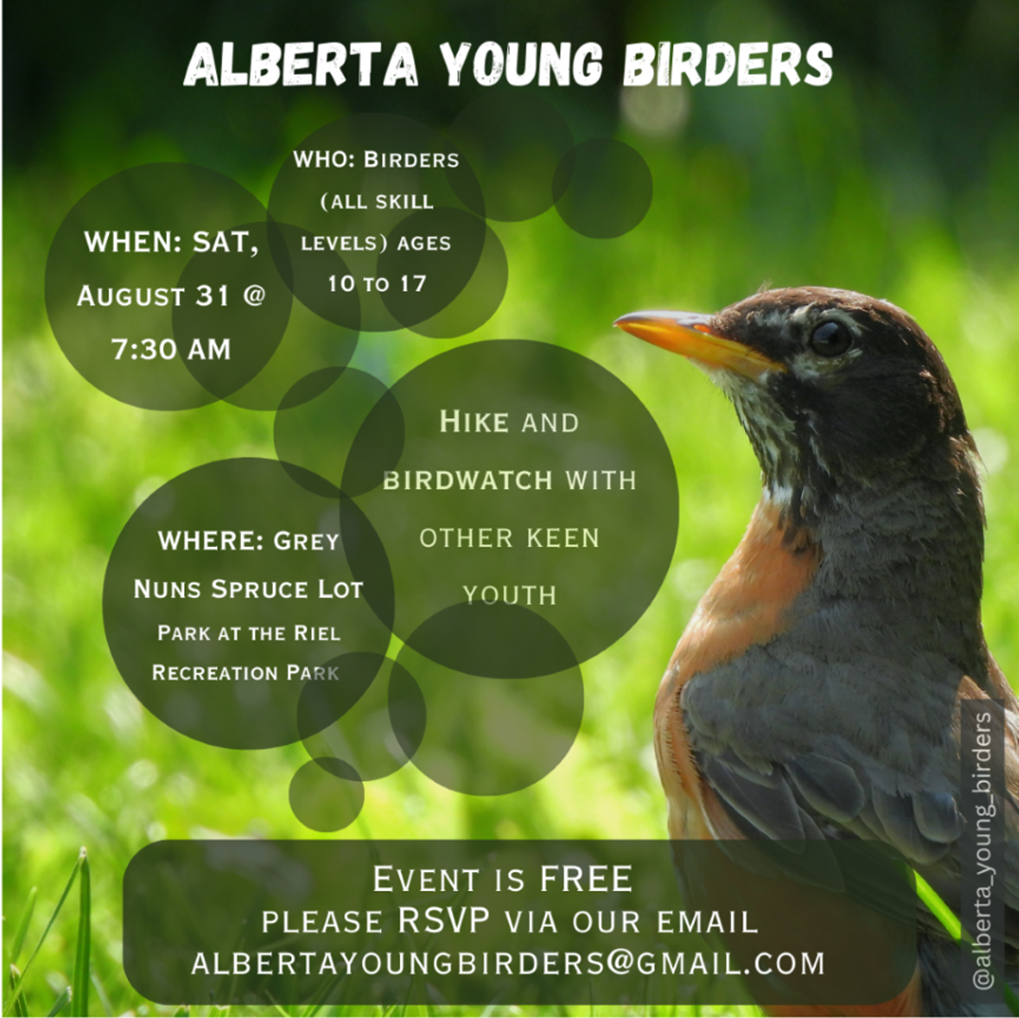
The Gadwall or “Grey duck” , is a greyish-brown, mid-sized dabbler. They are most readily identified by the white feathers of the speculum adjacent to the body. Forward of the speculum is a chestnut-coloured patch. Females are identified mainly by their white bellies and similar white and black wing patches. Both sexes have steep foreheads, narrow, greyish-black bills and yellow legs. The Gadwall is noted for its colonial-like nesting on islands in some Prairie wetlands.
One hypothesis links the name to Anglo-Saxon “gad” meaning a “point. This would be in reference to the tooth-like projections along the edge of the bill’s mandible. These projections, known as lamellae, are present on both the upper and lower mandibles (beak parts) and help the Gadwall filter food from the water.
Every year Kris and I have a bird on our wish list that we endeavor to seek out in our many birding trips. One bird has eluded our searches but May 7th all that changed. It was getting close to dusk and as we rounded a corner there he was just sitting on the fence post. Time for a close-up digital photo for our album. But he was not going to make it easy. Then as he flew across the field, he flushed his mate. We now had two sightings.
We were thrilled. But that wasn’t the end of the story. As we continued on our way back home and came over a small hill in the road, there was another one just sitting on a fence post and he too had a mate. 4 sightings in less than an hour. We still have another bird on our list—the Common nightjar, so the search continues.
Every year Kris and I have a bird on our wish list that we endeavor to seek out in our many birding trips. One bird has eluded our searches but May 7th all that changed. It was getting close to dusk and as we rounded a corner there he was just sitting on the fence post. Time for a close-up digital photo for our album. But he was not going to make it easy. Then as he flew across the field, he flushed his mate. We now had two sightings. We were thrilled. But that wasn’t the end of the story. As we continued on our way back home and came over a small hill in the road, there was another one just sitting on a fence post and he too had a mate. 4 sightings in less than an hour. We still have another bird on our list—the Common nightjar, so the search continues.
The Short-eared owl is a medium sized owl that is active during the day and the night. They are similar in appearance to the Long-eared owl (and about the same size) and the larger Great horned owl (Alberta’s national bird) but occupy an entirely different habitat. Short-eared owls are found in open marshes, grasslands, tundra and sage desert often residing opposite Northern harriers. They even nest on the ground like Harriers. Their main prey are mice and voles, which they swallow whole, but they do catch some small birds from time to time. They hunt low to the ground, listening and looking for prey, and pounce with great speed and agility when they hear or spot a prey item. Once securing prey, they swallow it quickly or tuck it close to their body as they fly off to a secluded spot, always on the lookout for other raptors who might want to steal their meal. When mating they make a series of low hoot-like sounds. When agitated or in flight, they make a sharp raspy barking call or drawn out raspy call. Fledgling Short-eared owls beg in a raspy tone or chatter in quick raspy series.
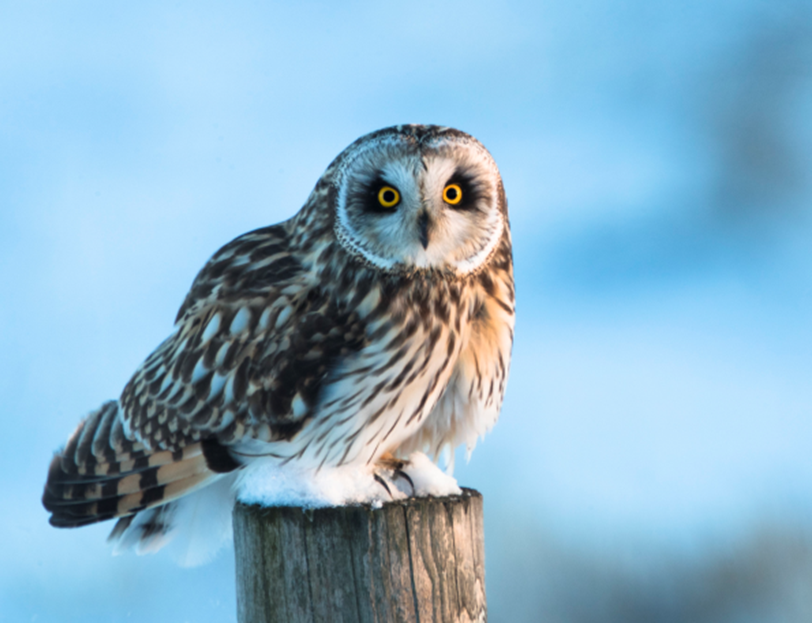


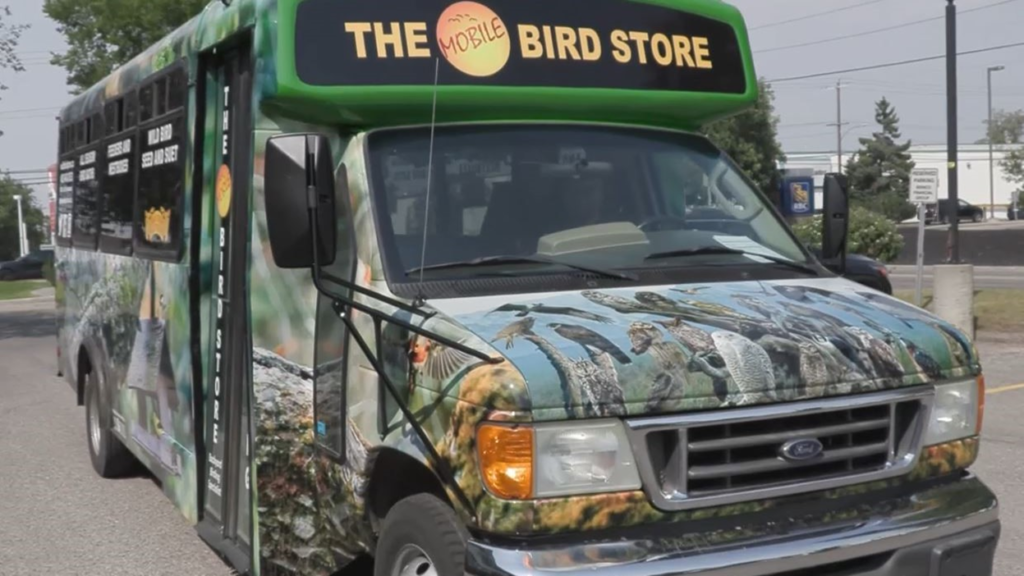

Wildwood Community Centre (4411 Spruce Drive SW): Every Tuesday 3:00pm to 6:00pm
Look for the Broxburn Vegetable truck in the lot with us!
Crowfoot Arena (corner of John Laurie & Nosehill Drive NW: Every Wednesday 2:00pm to 5:30pm
Please place orders by 12:00 noon the day before the truck is on location
Text us @ (403)701-4571 OR email us at orders@wildbirdstore.ca
Earn and redeem customer loyalty points on the Mobile Seed Truck

DELIVERY: Deliveries will still be made on Thursdays ONLY. Please phone the store at (403) 640-2632 any day prior to 12:00 noon on the Wednesday before your delivery; place and pay for your delivery. Please phone with your order as early as possible to avoid disappointment. If you have any special instructions please do not forget to inform us when you place your order.
THE DELIVERY CHARGE WILL BE $10
MINIMUM ORDER FOR DELIVERY $25.
Have you checked out the Merlin app? Would you like a demonstration on how they will help you to identify birds? Stop by The Wild Bird Store during regular business hours and staff will be happy to show you how the app will enable you to identify birds in various ways.
Identify Bird Songs and Calls
Identify Birds by your Photos
Save Birds to Your Life List
Explore lists of birds near your location
Options for shopping at the Wild Bird Store



HOME DELIVERY SCHEDULE FOR MONTH OF MAY 2025
Thursday May 1, Thursday May 15,
and Thursday May 29
THE DELIVERY CHARGE WILL BE $10. MINIMUM $25 ORDER FOR DELIVERY.
Store hours are:
10:00am to 5:00pm Tuesday through Saturday
If you are unable to make it in to the store on Tuesday for Senior’s Day Discount, then you can call the store anytime on Tuesday to place and pay for your order, and then you can pick it up later in the week at your convenience.
PLEASE NOTE: This is for customers who are currently signed up as a senior’s day customer and applies only to in-store purchases.
Nearly 3 Billion Birds Gone Since 1970
A first-ever comprehensive assessment of net population changes in the U.S. and Canada reveals across-the-board declines that scientists call “staggering.” All told, the North American bird population is down by 2.9 billion breeding adults, with devastating losses among birds in every biome. Forests alone have lost 1 billion birds. Grassland bird populations collectively have declined by 53%, or another 720 million birds.
Common birds—the species that many people see every day—have suffered the greatest losses, according to the study. More than 90% of the losses (more than 2.5 billion birds) come from just 12 families including the sparrows, blackbirds, warblers and finches.
The losses include favourite species seen at bird feeders, such as Dark-eyed juncos (or “snowbirds.” down by 168 million) and sweet-singing White-throated sparrows (down by 93 million). Eastern and Western meadowlarks are down by a combined 139 million individuals. Even the beloved Red-winged blackbird—a common sight in virtually every marsh and wet roadside across the continent—has declined by 92 million birds.
To read more kindly visit https://www.birds.cornell.edu/home/bring birds-back/
We offer a discount if you return your 20 LB or 40 LB seed bags so that we can re-use them (sorry—not the Mother Nature bags which we cannot re-use), suet ball containers, or if you bring your own container or bag to fill . This discount is in addition to any other discount offered.
Write a Google review on your experience at The Wild Bird Store, and as a thank you, we will give you 100 customer loyalty points ($5.00 value). To get a promo code, kindly email info@wildbirdstore.ca
(one Google review per customer)
Earn 200 customer loyalty points ($10.00 value) by referring a friend, acquaintance or fellow birder.
Please visit the store to get a promo code.
Combining our Seniors 10% discount with the Loyalty Program. (Excludes “sales” items, books & optics).
Discount for membership 10% discount for members of Fish Creek Park, AIWC, Priddis Golf Club, Nature Calgary, Sandy Cross Conservation, Springbank Garden Club and Millarville Horticultural Society. Must present valid membership card at time of purchase.
Discount for Military Members & Veterans 10% discount on
purchases in-store or on Mobile Seed Truck (sorry—excludes “sales”
items, books, optics and consignment items)
Does your Aspects or Squirrel Buster feeder need some replacement parts?

Did you know that we can repair/replace parts and make it look like brand new?

5901 3rd Street S.E.,
Calgary, AB T2H 1K3
email: info@wildbirdstore.ca
(403) 640 2632
The Store is open Tuesday through Saturday 10:00am to 5:00pm
We are CLOSED Sundays, Mondays and ALL Statutory holidays for Faith, Family and Friends.
We still offer curbside pickup every day we are open and delivery service on every other Thursday.
FOLLOW US ON:
Facebook @thewildbirdstoreyyc
Twitter @wildbirdstoreyyc
Go to YouTube, type in the search bar “The Wild Bird Store” to watch our videos and to help us become more visible . Be sure to click on “Subscribe” before you leave the page.



